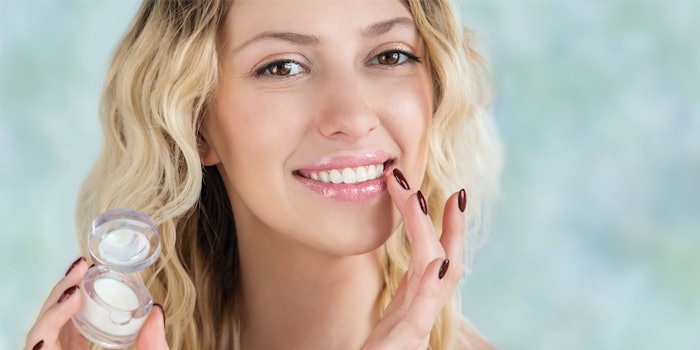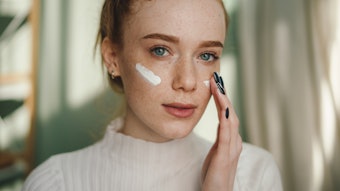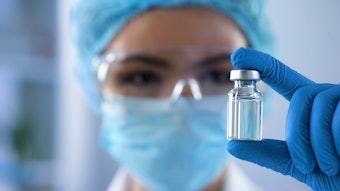
Read the full article in the November/December 2021 digital edition. . .
Lips, in time, begin to form wrinkles. In addition, factors including facial movement, dehydration, smoking, etc., largely contribute to lip aging. Lips are a part of the face that is most noticed, e.g., when talking or smiling at others. Therefore, they must be well-groomed and healthy as they play a central role in one’s appearance.
Rich in nerve endings, lips allow humans to eat, talk, smile and kiss. Moreover, full volume and sensual lips give a natural charm. Unfortunately, around the age of thirty, lips begin to show the first signs of aging. The mouth area is subject to the appearance of site-specific wrinkles and the lips themselves are more affected by dehydration phenomena with age. Dehydration also leads to loss of lip tone, incorrect eating habits and natural skin aging.
Wrinkles appear due to the frequent and repeated stresses that the underlying muscles exert on the skin tissue. Talking and smiling or frowning frequently are also some of the factors that lead to the formation of wrinkles.
To amend aged lips, consumers seek non-invasive topical treatments such as products to enhance lip protection, moisturization and more. The present article offers research insights on the causes of lip aging and proposes approaches to formulate non-invasive lip care.
Young vs. Aged Lips
The lips (Labia oris), or vermilion edges, form an extension (a pseudo-mucosa) from the mucous membrane to the outer skin. They are the only part of the face where the oral mucosa is permanently exposed to the environment with an epithelium that is characterized by thin and non-keratinized tissue.1-3
As for the skin, the aging process of the lips and its perioral skin involves different physiological changes. Comparing younger and older lips, the most striking changes observed are in the cutis and sub-cutis. While the thickness of the cutis decreases with age, an increase of adipose subcutaneous tissue has been shown in aged lips. This goes along with the fragmentation of elastic and collagen fibers in the cutis. Histomorphometric assessment of the ratios of the thickness of cutis to total lip thickness, and thickness of subcutaneous fat to total lip thickness supports these findings, showing a significant increase in subcutaneous fat together with a decrease in cutis thickness with aging.
Age-related changes also become evident in the consistency and structure of the orbicularis oris muscle. Whereas younger muscle shows well-defined bundles and fascicles surrounded by a thin layer of connective tissue, the aged muscle presents signs of atrophy with smaller bundles and fascicles.4, 5
Finally, researchers also have studied lip hydration by measuring lip capacitance. Analyzing the lip surface patterns from capacitance map images, they demonstrated a linear relationship between the number and visibility of lip wrinkles and age.6
Dermatological Treatments
In the past, beauty consumers were driven by social norms almost solely focused on looking younger. This often entailed a series of semi-invasive aesthetic dermatological treatments. For example, in the case of superficial wrinkles, a chemical peel can be used to make the skin smoother and more compact.7 If wrinkles are deep and well-separated from each other, a fractional laser technique can be used to stimulate the dermis to produce new collagen.8 Good results are also obtained by fractional radiofrequency, a resurfacing treatment that eliminates micro-roughness and gives the skin a more youthful appearance.9 It is even possible to undergo infiltrations of hyaluronic acid fillers associated with laser therapy to redefine the lip contour and level the skin furrows.10
Hyaluronic acid hydrogels are now the most commonly used fillers for skin rejuvenation. They meet the need for a biological substance, are easy to handle, and are convenient and effective in addressing medically indicated repairs. Further, they have a low risk of inducing an allergic response. New cross-linked polymers of hyaluronic acid have been introduced on the market as well, to stabilize the polymer matrices, increase their longevity in tissues and improve their tolerability.11
. . .Read more in the November/December 2021 digital edition. . .
References
- Zugerman, C. (1986). The lips: anatomy and differential diagnosis. Cutis 38 116–120.
- Kobayashi, H. and Tagami, H. (2004). Functional properties of the surface of the vermilion border of the lips are distinct from those of the facial skin. Br J Dermatol 150 563-567.
- Ya-Xian, Z., Suetake, T. and Tagami, H. (1999). Number of cell layers of the stratum corneum in normal skin –relationship to the anatomical location on the body, age, sex and physical parameters. Arch Dermatol Res 291 555-559.
- Penna, V., et al. (2009). The aging lip: a comparative histological analysis of age-related changes in the upper lip complex. Plast Reconstr Surg 124 624–628.
- Wong, V., et al. (2020). Effects of age, sex, disease, and exercise training on lip muscle strength. Cosmetics 7 18. https://doi.org/10.3390/cosmetics7010018;
- Leveque, J.L. and Goubanova, E. (2004). Influence of age on the lips and perioral skin. Dermatology 208 307-313.
- Wambier C.G., et al. (2019). Augmentation and eversion of lips without injections: The lip peel. J Am Acad Dermatol 80(5) e119-e120.
- Borges, J., et al. (2020). Fractional laser resurfacing treats photoaging by promoting neocollegenesis and cutaneous edema. J Clin Aesthet Dermatol 13(1) 22-27.
- Kleidona, I.A., Karypidis, D., Lowe, N., Myers, S. and Ghanem, A. (2020). Fractional radiofrequency in the treatment of skin aging: an evidence-based treatment protocol. J Cosmet Laser Ther 22(1) 9-25
- Luthra, A. (2015). Shaping lips with fillers. J Cutan Aesthet Surg 8(3) 139-142.
- Salti, G. and Fundarò, S.P. (2020, Jul 24). Evaluation of the rheologic and physicochemical properties of a novel hyaluronic acid filler range with excellent three-dimensional reticulation (XTR) technology. Polymers (Basel) 12(8) 1644.











